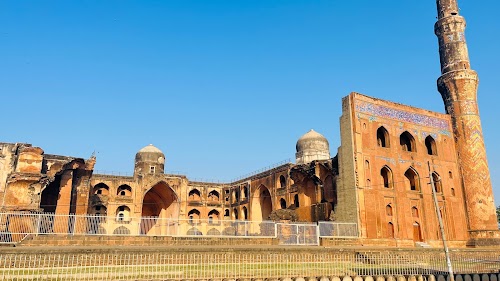
Mahmud Gawan Madrasa
Bidar, India
- Explore the intricate tile work and arches.
- Learn about Bahmani dynasty history.
- Photograph the Madrasa's impressive facade.
- Visit the prayer hall.
- Wander through the central courtyard.
Known for:
Description:
The Mahmud Gawan Madrasa in Bidar is an imposing structure that stands as a testament to the architectural prowess of the Bahmani Sultanate. This 15th-century theological college is renowned for its stunning Persian-style architecture, characterized by intricate tile work, grand arches, and towering minarets. While some of the tile work has faded with time, the sheer scale and remaining details offer a glimpse into the grandeur of its past. Visitors can explore the large courtyard, classrooms, library, and prayer hall, imagining the vibrant intellectual life that once thrived within these walls. The Madrasa is a must-see for history buffs and architecture enthusiasts alike, providing a unique window into the Deccan's rich cultural heritage.
History:
Built between 1460 and 1472 CE by Mahmud Gawan, the prime minister of the Bahmani Sultanate, the Madrasa served as a center for religious and secular learning. Gawan, a Persian merchant and scholar, envisioned it as a rival to the great universities of Persia and Iraq. He brought in scholars from across the Islamic world to teach theology, philosophy, mathematics, and other subjects. The Madrasa boasted a vast library, contributing significantly to the intellectual atmosphere of Bidar. After the decline of the Bahmani Sultanate, the Madrasa suffered neglect and damage. Despite this, it remains an important historical landmark, showcasing the Bahmani dynasty's commitment to education and its cultural connections with Persia. Restoration efforts have been undertaken to preserve this architectural gem.